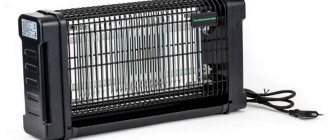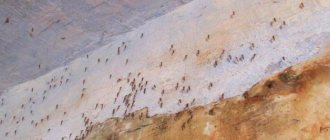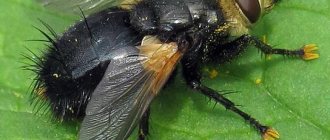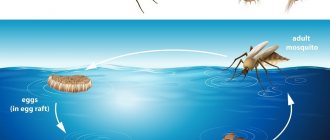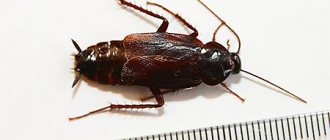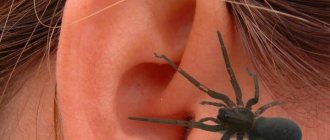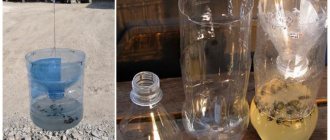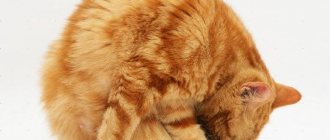Why mosquitoes fly at night rather than during the day and why only females bite – not everyone probably knows about this. Mosquitoes are not only an annoying squeak at night and not only painful bites and painful itching. Mosquitoes also carry infection, and a person who is bitten runs the risk of becoming seriously ill. When mosquitoes are most active, it is better not to appear in their habitats at all. But it is not always possible to protect yourself from a mosquito bite when you are in an open area. If it’s warm outside and quite humid, such a meeting will be almost inevitable.
Features of insects
Mosquitoes belong to the order Diptera because they have two pairs of wings. The posterior ones are called “haleteres”. The heads of insects are equipped with long antennae of 6 or more segments. Males have feathery antennae with a large surface, which helps them detect females ready to mate.
The oral apparatus of insects is a case in which two pairs of jaws are hidden. In females, they are equipped with thin teeth, with which insects pierce the skin of their victims. Males drink plant sap and eat pollen; their jaws are not designed for obtaining blood.
There are 100 species of mosquitoes in Russia. The most common 3 blood-sucking species are:
- Real mosquitoes (culexes). This is an insect 4-10 mm long with two wings. A species of culex, the common mosquito, lives in forests and cities.
- A biting mosquito reaching 7 mm in length. It is distinguished by its original color - white stripes on its legs and body. The insect lives in the southern regions, mainly in forests.
- A malaria mosquito that carries dangerous parasites - malarial plasmodia. It is similar in appearance to the Culex, but has longer legs and antennae.
Facts from history
There are archaeological finds confirming the existence of mosquitoes during the age of dinosaurs. Mosquitoes appeared during the Jurassic era, approximately 175 million years ago. Their active reproduction was facilitated by high air temperatures, high humidity, and abundant greenery.
Initially they fed exclusively on plant nectar and pollen. During evolution, females switched to blood. The males remained vegetarians. There are more than 3 thousand species of mosquitoes of different sizes. Primitive insects reached sizes of 5 cm in length. The modern common bloodsucker grows up to 5 mm.
When are bloodsuckers most active?
Most mosquitoes become active in the evening. In summer, closer to sunset, entire clusters of insects appear in shady areas near swamps and ponds. The person there cannot avoid severe bites.
The biting mosquito has special habits. He prefers to attack his victims in the morning and early in the day. The squeaking mosquito sits in a shelter during the day and produces blood in the late evening or at night.
All types of mosquitoes are afraid of the scorching rays of the sun and in the midday heat they hide in the grass, under the leaves of trees and in other shady, damp places. But if bloodsuckers have entered your home or office, they will bite during the day. This is explained by the fact that the temperature and humidity in the room are constant and there is shelter from the sun.
Wind and rain
What mosquitoes are afraid of outdoors is strong winds. In nature, most species of bloodsuckers fly at a level of 10-15 meters above the surface of the earth, as they feed on the blood of animals. But the wind can carry their tiny bodies long distances.
So, if you need to build a hunting hut in the forest, it is better to choose a clearing that is well blown by the winds.
But mosquitoes are not afraid of rain, contrary to popular belief. Insects successfully move under raindrops. Only heavy rainfall can force them to take cover, otherwise walking in the rain can be deadly.
Night activities
Mosquitoes fly out to hunt and search for plant food after sunset. They cannot stand sunlight, as bright rays cause them dehydration, leading to death.
Insects fly most intensively between 20-22 o'clock in the evening and at 4-6 o'clock in the morning. These watches are distinguished by comfortable conditions for them: temperature, atmospheric pressure and humidity take the most suitable values. At this time, females are able to travel 50 km in search of prey.
Towards noon, mosquitoes hide in damp, shady corners and remain there until it gets dark. Daytime rest allows them to remain active and, with fresh energy, begin to forage for food at night. Insects bite most intensely in the evening, and by morning the number of attacks decreases. A sleeping person or animal that does not feel the bites or resist is an ideal victim for a mosquito. Therefore, at night you should protect windows with mosquito nets and use fumigators.
Scientists have established an interesting fact: mosquitoes are most aggressive during the full moon. During this period, they become 500 times more active than usual.
How long does a mosquito live?
The annoying squeak of little pests spoils the pleasure of the long-awaited summer. The situation becomes especially unbearable in rural areas or simply near forested areas. It becomes interesting: how long does the parasite live? There is no exact answer because the lifespan of a pest depends on a number of factors.
- Gender of the insect. First of all, it’s worth understanding a simple fact: males live exactly half as long as females.
- Temperature. It’s worth talking about this in more detail, because this information can help in confronting the squeaky enemy. So, the higher the air temperature, the shorter the insect will live. At a temperature of about 20°, the female will live about 42 days, and when it drops to 10°, the lifespan will increase to 115 days. In the case of a male, divide the number by two.
- Nutrition. The parasite is afraid of both hunger and oversaturation. It is a myth that a mosquito dies immediately after biting a person. One mosquito can bite a person up to 8 times within a couple of hours. By the way, only females feed on blood, males exclusively on nectar.
Start and end of the season
Mosquito season is a time when insects are active. In some regions it begins earlier, in others later. Many people believe that bloodsuckers bite only in the summer. But this is not so - their activity depends on the temperature and humidity of the air. A mass awakening begins when daytime and nighttime temperatures stop falling below + 10 ºC.
Mosquitoes living in the temperate climate zone begin to fly in May and end in October. If the spring is dry and hot, then they do not appear until June. In the northern regions, parasites disappear in September or even August.
You should not think that all insects die with the onset of cold weather. As a result of evolution, they have adapted to cope with winter in different ways. In some species, adult individuals die with the onset of frost, and only eggs and larvae overwinter. Others tolerate winter well at all stages of development.
Unlike flies, which continue to crawl at low temperatures, mosquitoes disappear abruptly after the first frost. Only females that were born in late summer or early autumn overwinter. Males fertilize females and die immediately.
Sounds
What sound do mosquitoes not like? Insects are repelled by the sound of the rustling wings of a dragonfly and the sonar of bats. Natural predators of mosquitoes eat them in large quantities. Studies have been conducted, one bat eats more than six hundred mosquitoes in an hour. It is not surprising that the sounds that predators make scare away insects. The same applies to birds; no studies have been conducted, but experts say that the tit eats insects equal in weight to its own.
Thus, ultrasonic repellers imitate the sounds of predators. The creators of the devices say that mosquitoes do not like a frequency of 30 kHz; it plunges them into panic.
It remains a mystery whether ultrasound actually works on mosquitoes. But in any case, the sound of danger scares away animals and insects.
Parasites in the northern regions
Although mosquitoes are common throughout Russia, the largest number of them are found in Siberia. Bloodsuckers living in the northern regions, as a result of evolution, have acquired incredible frost resistance. Their females and eggs hide under ice and snow in winter.
When the summer sun warms the tundra, vast swamps form in many places. Clouds of hungry insects fly out of them, looking for food. This is a difficult time for people and animals. The main victims of bloodsuckers are caribou, but they also readily attack people.
Mosquitoes penetrate under clothing and into shoes, and violently attack areas of unprotected skin. Hordes of vile creatures can drive unprepared people to despair.
Swollen feet
Our feet can swell from the summer heat: by evening they feel as heavy as lead. This causes serious discomfort and can be a source of serious sleep deprivation.
Try doing some light exercise throughout the day. As we all know, movement is life. Even if your job requires you to sit at your desk for hours, at least occasionally raise your shins up, and also stretch and bend your feet.
Moreover, before you lie down, take a cold shower! This approach will lead to improved blood circulation: as a result, the body will be able to relax and fall asleep.
How mosquitoes survive winter
With the onset of cold weather in the temperate zone, insects hide in shelters created by nature:
- under tree bark;
- in animal holes;
- in dried grass and leaves.
They often winter in premises built by people: cellars, sheds, cellars and vegetable stores.
In temperate and cold climates, with the onset of winter, mosquitoes enter a state called diapause. This is a period when physiological activity decreases, metabolism sharply decreases and resistance to adverse conditions increases. Eggs, larvae and adult mosquitoes can remain in this state. Each stage of diapause has its own characteristics:
- Female mosquitoes stop reproducing. Their metabolism decreases and they accumulate fat, which helps them endure the cold season.
- Males die when frozen. Female malaria mosquitoes, squeakers and stinging mosquitoes remain for the winter.
- Mosquito eggs have good resistance to winter conditions. Biting mosquitoes in northern regions tolerate cold only at the egg level.
- The larvae of most species do not die when winter sets in. They stop developing and do not pupate.
In southern countries, when it gets hot and dry, mosquitoes diapause. This helps them tolerate high temperatures and low humidity. Many tropical species do not enter a state of diapause and remain active throughout the year. The same applies to urban mosquitoes that do not hibernate. They suck blood and reproduce constantly.
Life cycle of mosquitoes
The development of a mosquito with complete transformation takes different periods. It all depends on the amount of food, humidity, the overall average temperature during the day, as well as temperature changes, protection from heat, and the absence or presence of natural enemies.
The average period of development of an adult from the moment the female lays eggs until hour X is 40 days. However, under a favorable combination of circumstances, this amount of time can be safely reduced by 8 times. It will only take 5 days.
The life cycle of a mosquito goes through 4 stages:
Go to website
- First, the adult female lays eggs. Their number varies from several tens to several hundred. It all depends on the state of health of the individual and the amount of food taken before. The female lays eggs in moist, watery soil or damp, mature grassy thickets. These conditions allow you to achieve the ideal temperature for future offspring.
- Within a few days, larvae hatch from the eggs. They look like small worms up to several millimeters long. They have the simplest oral apparatus. They can feed themselves. Filter the water for ready-made food particles. Over the course of several days, the larvae molt several times and undergo a series of metamorphoses within the same stage.
- The third stage is the pupa. Pupation occurs rapidly. Externally, this stage is very different from the previous one. It is interesting that this phase of development of the malaria mosquito looks different. But only experienced entomologists can visually distinguish different families of bloodsuckers. In the pupal state, insects become less mobile. They require less food than before.
- Finally, the imago, an adult, emerges from the pupa. That is, a healthy, full-fledged bloodsucker with the whole set of typical characteristics.
Thus, the answer to the question of what kind of development a mosquito has - direct or indirect - can be answered that it is indirect. With a complete transformation. The general development cycle from the moment of laying eggs to the maturation of the offspring takes from 5 to 40 days. Everything happens in stages. From this time, the full life cycle of an adult begins.
Mosquitoes are bisexual insects. The further existence of individuals, their way of life is very different.
Where do insects come from in apartments in winter?
The urban mosquito is a product of urbanization. It appeared due to the growth of cities and the construction of multi-story buildings. Unlike its relatives - ordinary mosquitoes, the urban bloodsucker does not hibernate. It remains active all year round, bites people and breeds.
Urban mosquitoes do not need a swamp or river to reproduce. They lay eggs in basements, near wet water pipes. Parasites fly into apartments through ventilation shafts, open doors and windows.
Bright light
One of the factors contributing to lack of sleep is excessive amounts of light. Because of this, our body feels more active even at night, and the production of the sleepiness hormone melatonin begins later.
If brightness is making it difficult for you to fall asleep, try darkening the room. Buy blackout curtains or even invest in a sleep mask: this could be a great solution for you.
Moreover, light from electronic device screens also negatively affects the release of melatonin. This is why you should not use your phone while in bed.
Labeling makes it impossible to counterfeit Sputnik V vaccines
New beginnings or prosperity: one of the 5 cards with butterflies will tell you about the future
The simplest way to lose weight is called healthy sleep
What are the benefits of mosquitoes
No matter how annoying mosquitoes are to people, we should not wish for their complete extermination. The disappearance of bloodsuckers would be an environmental disaster for the following reasons:
- The vacated niche will quickly be occupied by other parasites. Instead of mosquitoes, horseflies, ticks and midges will breed, and there will be many more biting insects.
- Some species of amphibians, birds and fish, for which mosquitoes and their larvae are the main food, will die.
- Plants pollinated by male bloodsuckers will disappear, which is important for the northern regions.
- Due to the abundance of deadly mosquitoes, forests in Africa and Asia - the lungs of the planet - are inaccessible to people today. If their development begins, it will lead to an environmental disaster.
Bloodsuckers emerge from hibernation when the air temperature rises above +10 ºС. They bite people at night and hide during the day, as they do not tolerate the burning rays of the sun. When the air temperature drops below +10 ºС, their activity decreases sharply, and at +2 ºС most of them die. Only eggs, larvae and females born in autumn survive winter. Males die when frost occurs.
Mosquito activity at night is associated mainly with female bites
All mosquitoes hunt and feed in the evening, at night and at dawn. They invariably avoid solar activity, and this is due to mosquito physiology. Staying under the scorching rays of the sun threatens blood-sucking dehydration of the body. Thus, exposure to the sun is downright deadly for mosquitoes. In the heat, they can die within a matter of hours.
During hot weather, mosquitoes hide where it is cool, damp, or shady. And as soon as it gets dark, the mosquitoes are right there, and they bite the most right when they fly out of their daytime shelters.
Not all mosquitoes bite, but only representatives of the beautiful mosquito sex. Moreover, biting and drinking blood is more important for them than eating. This is due to the usual instinct for procreation. The main thing is the offspring and caring for them, and then the real food, for which, as a rule, all insects use the juice and nectar contained in plants.
For a female mosquito, blood is vitally important, because otherwise her reproductive function will not work. Thus, the female mosquito drinks blood in order to stock up on nutrients, without which it is impossible to lay eggs.
The mosquito reproduction pattern is as follows: a female and a male mate, then the female needs blood, after which it takes two days to process it. During this time, an egg was formed in the female’s body. It is fertilized by a sperm, and then all that remains is to lay eggs that have reached their maturity.
Males have a different task: they feed on nectar and juice and fertilize females, supplying them with sperm.
Too hot
Warm summer nights can be quite romantic, but they turn into a nightmare for those who sweat quickly at night. What can help? In the morning, it is best to close the window after ventilation and lower the blinds, and when the heat of the day subsides, ventilate the room. Moreover, make sure that there is a draft in the room in the evening.
Also think about what material your blanket is made from. It’s better to forget about satin, polyester and silk until next winter. In the summer, it is better to cover yourself with lighter and more breathable fabric. Cotton is perfect for such purposes: using a bedspread made of this material will definitely not make you hot.
Found a violation? Report content
What factors influence the choice of victim?
According to some studies, blood type O is the best option for these insects. But besides this, other factors, which include human genetics and even diet, play a big role in how “tasty” the victim will be.
"Your skin gives off a unique scent that will be more attractive to some mosquitoes," Riehle said.
Female mosquitoes bit more men who had less variety of bacteria on their skin. These bloodsuckers are also partial to people who wear dark colored clothing, especially black.
Introductory part
Before we move on to tips, let's remember what attracts female mosquitoes to humans - this knowledge will help us kill a mosquito in the dark.
The first is, of course, blood and the protein it contains. Moreover, if a mosquito has a choice between blood groups I, II, III and IV, it will choose the first. Why? Scientists explain this by saying that group I has existed in humans for many thousands of years and mosquitoes have been drinking it for about the same number of thousands of years, and the remaining groups are considered relatively new and are not very familiar to them. Get rid of mosquitoes in your country house
Get rid of mosquitoes in your country house
Hit from the USA. A guaranteed way to destroy all mosquitoes on the site.
skeetervac.ru
Open ›
In second place after blood is carbon dioxide (CO2), which people emit when breathing. The more intensely you breathe, the faster the mosquito will detect you. Detection radius is approximately 50 meters. In addition to carbon dioxide, mosquitoes are attracted to the smell of sweat or alcohol.
Mosquitoes also readily fly to heat and light. Moreover, they perceive light not as people, but as a source of heat. Therefore, they fly into the light of ordinary incandescent lamps or fires. But LED lights are practically not attractive to them.
Interesting! We haven't tested it ourselves, but based on the above, if you get bitten by mosquitoes at night, you need someone who has drunk a bottle of beer, is breathing heavily, is holding a floor lamp, is sweating, and has blood type O. In this case, with a 99% probability they will not bite you! But whether you can sleep next to such a defender is another question.

